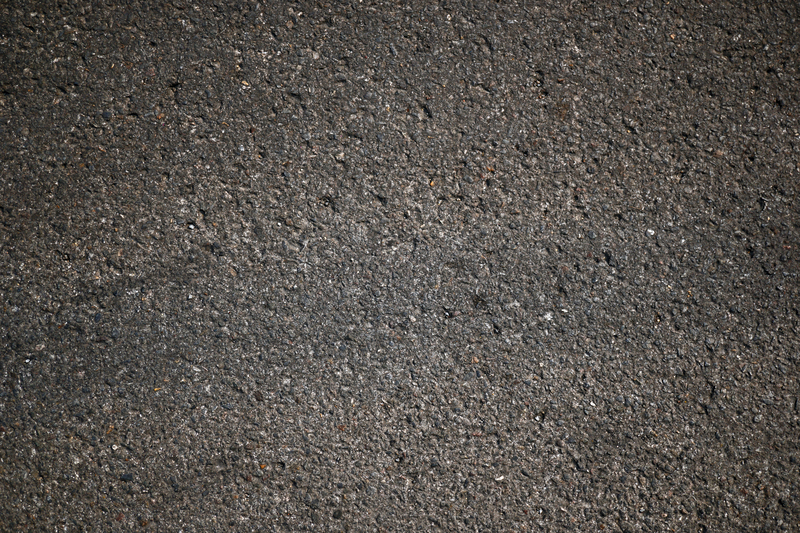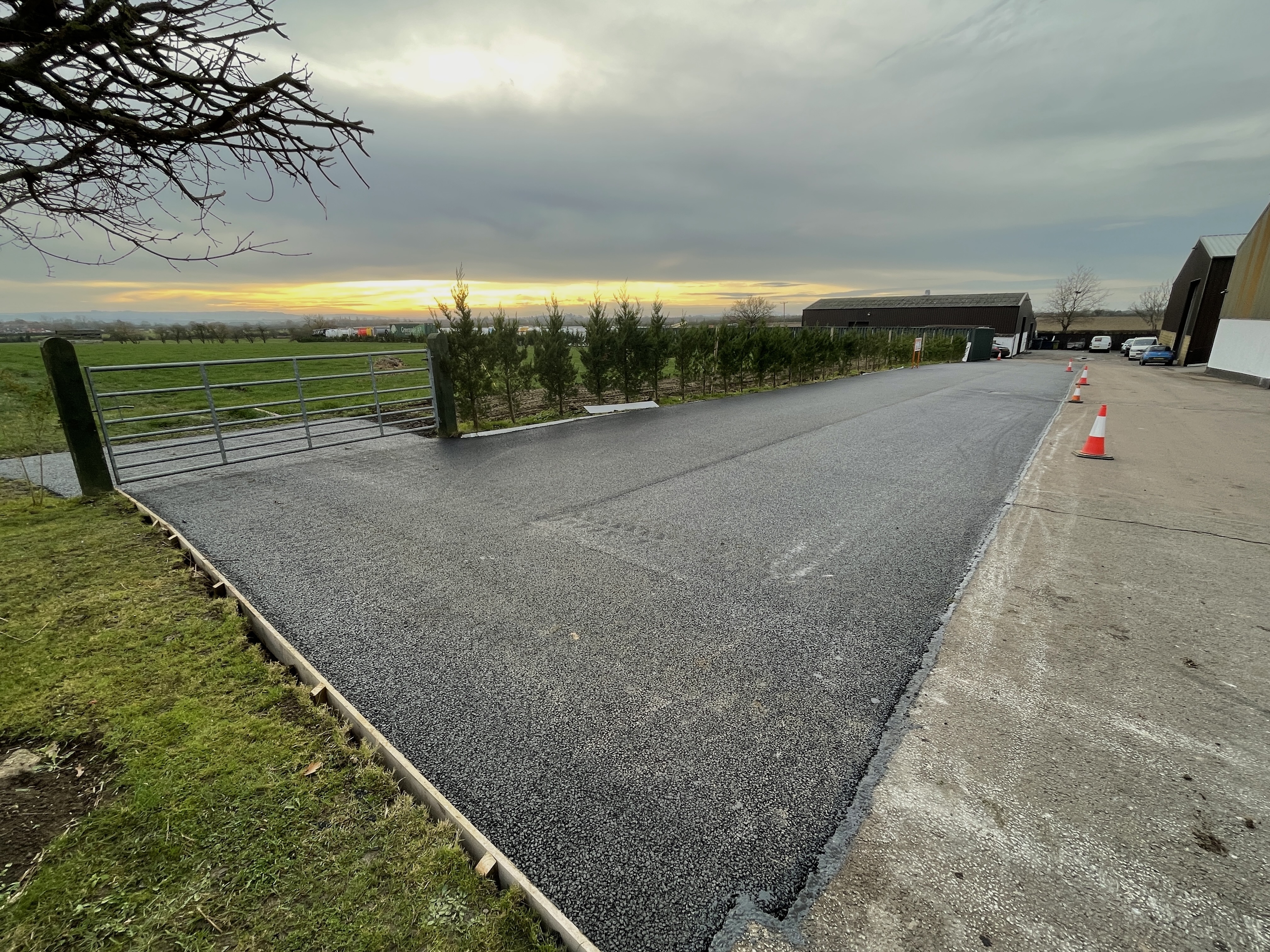
WHY IS MY TARMAC DRIVEWAY TURNING BROWN?
Blog
Tarmac driveways turning brown is a common concern for property owners, often leading to questions about its impact on property aesthetics and maintenance. If this is impacting your driveway and you need clarification on why - we've got you covered.
In this blog, we will explore the reasons why tarmac turns brown, address common concerns, and provide potential solutions to this problem. Understanding the nature of the brown discolouration on tarmac drives allows you to gain insights into its non-defective characteristics and explore ways to manage and monitor affected areas effectively.
The problem
So, you've got your brand new shiny tarmac surface. Maybe it's a new tarmac driveway, or you've expanded on your existing driveway surface - the point is, you're looking at your beautiful surface, and suddenly, you're looking at brown spots. Your new driveway is covered in brown marks that you cannot scrub away, and you're not sure why.
Considering the average tarmac driveway cost along with labour costs, you're stressed out, wondering why your expensive lay tarmac is discoloured. Nothing you're doing seems to fix the problem, and now you're stressed out. Well, fear not! There's a reason behind this current phenomenon, and the answers are nowhere near as bleak as you might think. Let's take a look into this problem and why it's happening.

So, why is my tarmac driveway turning brown?
While the brown discolouration observed on tarmac drives can stem from a variety of causes. In short, the leading cause of these brown spots and subsequent brown streaks on the pavement is iron oxide.
The evolution of the oxidation process in the tarmac presents as an increase in size, followed by bursting - which ultimately breaks through the hot mix tarmac surface, forming small brown craters in the pavement.
What does this mean?
This emulsion consists of bitumen, water, and fine aggregates, and when it rises to the surface during compaction, it can result in a temporary brown appearance on the tarmac. Additionally, local atmospheric conditions play a significant role in the discolouration of tarmac drives.
Factors such as humidity, temperature variations, and exposure to certain environmental elements can influence the appearance of the tarmac. For instance, prolonged wet weather or the presence of specific types of trees and bushes near the drive can contribute to the development of brown stains.
Does this brown stain damage the tarmac?
It's crucial to emphasise that despite its visual impact, this brown colour is merely a surface feature and does not compromise the quality or performance of the tarmac. The structural integrity and durability of the material remain unaffected, ensuring that the functionality of the tarmac is preserved despite any aesthetic changes.
Understanding this distinction should give you peace of mind, as you should recognise that the brown discolouration does not indicate underlying issues with the tarmac's performance or longevity.
Does anything else affect this?
The discolouration of tarmac drives often exhibits seasonal and location-specific patterns, which can be attributed to the influence of varying atmospheric conditions. This particular problem tends to manifest at specific times of the year and in sheltered locations, with these distinct characteristics shedding light on the role of seasonal and localised weather conditions in the appearance of discolouration.
Seasonal and Location Influence
Discolouration is more likely to emerge during certain times of the year, such as the cooler and wetter seasons. This is often observed in autumn and winter when the prevailing environmental factors, including higher humidity and lower temperatures, create conducive conditions for the appearance of brown staining on tarmac drives.
Sheltered locations, such as areas near dense foliage or buildings, are particularly susceptible to this discolouration due to reduced exposure to direct sunlight and limited air circulation. These areas may experience prolonged dampness and reduced evaporation rates, contributing to the development of brown discolouration.
Will it stay like this forever?
However, as the seasons transition and the summer months approach, the gradual disappearance of this discolouration becomes evident - primarily due to the increasing heat from the sun. The higher temperatures and extended daylight hours during summer facilitate enhanced evaporation and promote the dissipation of the brown staining.
As a result, you may notice a natural fading and eventual disappearance of the discolouration on your tarmac driveway during the warmer months - illustrating the seasonal dynamics of this surface feature.

Is this something to worry about?
It's common for you to be concerned regarding the aesthetic impact and potential implications of the brown discolouration on your tarmac driveway. While you must want to protect the maintenance, visual appeal and longevity of your driveway, you must understand the nature of these marks.
First and foremost, it's crucial to remember that the brown discolouration does not signify the tarmac's defective material or compromised quality. Rather, it is a result of the inherent properties of hot bitumen, fine aggregates, and specific atmospheric conditions during the installation and subsequent environmental exposure.
It's also important to know that discolouration is a surface feature and does not detract from the structural integrity or performance of the tarmac. While it might be a bit of a nuisance to see your drive all marked up, it's a natural part of the tarmac process.
What solutions are there for this?
While the best thing to do is wait for the tarmac discolouration to change back naturally, you can adopt proactive measures to manage the brown discolouration of your tarmac driveway and monitor the affected areas effectively.
Let's take a look at some potential solutions to address the discolouration and promote a natural reversion to the tarmac's original black or grey form over the summer months:
Monitoring the Affected Areas:
Regularly monitor the areas exhibiting brown discolouration. This can involve periodic inspections to observe the gradual changes in the appearance of the tarmac, especially as the seasons transition and the warmer months approach.
Allowing Natural Reversion:
Highlight the importance of allowing the discolouration to naturally revert to its black or grey form over the summer months. By acknowledging the influence of seasonal dynamics, you can gain confidence in the transient nature of the discolouration and the gradual restoration of the tarmac's original appearance.
Environmental Management:
Advice you should consider is considering environmental management practices, such as ensuring adequate drainage to minimise prolonged dampness and enhancing air circulation in sheltered areas near the tarmac.
These measures can contribute to mitigating the conditions conducive to the development of brown staining. While discolouration cannot be entirely predicted or accepted as a liability, there are practical ways to manage and monitor the affected areas.
By adopting these solutions, you can actively engage in the care and maintenance of their tarmac drives, promoting a balanced approach to addressing the aesthetic changes while recognising the natural processes at play.
Maintain your tarmac driveway
Now that you understand more about the brown tarmac phenomenon, it is essential to remember that cleaning and maintaining tarmac driveways should be your top priority. Not only is cleaning your tarmac driveway crucial for its longevity, but it's also essential for you to continue to uphold the fantastic aesthetics of your new driveway.
In addition to preserving the physical integrity of the driveway, regular maintenance enhances the liveability and safety of your property, providing a safe and functional space for vehicles and pedestrian traffic.
You can check out our article on How to Clean a Tarmac Driveway, but you can take a look below to remind yourself of the basic maintenance requirements to preserve your driveway best.
- Let it Dry Before Usage: After installation or maintenance, allowing the tarmac to dry properly before using the driveway is essential.
- Clean Spillages Immediately: Promptly clean any spillages to prevent staining or damage to the tarmac surface.
- Utilise Low-Pressure Cleaning: Sweep away debris and use water with low pressure to clean the tarmac driveway effectively.
- Clear Loose Objects: Use a blower, broom, or leaf blower to remove loose objects like leaves, grass clippings, and dirt particles from the tarmac surface.
- Regular Weed and Moss Removal: Regularly eliminate weeds and moss, and sweep the driveway daily to remove dead leaves and other debris.
- Use Degreaser for Oil Stains: Purchase a degreaser or oil-removing product safe for use on the tarmac, then scrub the affected areas with a stiff brush.
Things to remember
In summary, the brown discolouration observed on tarmac drives is a surface feature influenced by seasonal and localised atmospheric conditions rather than a reflection of material defects. It is essential to reassure property owners that this aesthetic change does not impact the functionality or structural integrity of the tarmac.
We encourage you to understand the underlying causes of the discolouration and highlight the transient nature of this phenomenon. By considering the natural resolution of the discolouration over time, you can adopt a proactive yet patient approach to managing and monitoring their tarmac drives, fostering confidence in the enduring quality and performance of the material.
Remember, it's a natural process of the tarmac process - and in no way does it mean your tarmac is faulty. While it's annoying to see your dream driveway spotted with brown marks, note that they will eventually disappear over time.
Henson Surfacing
Here at Henson Surfacing, we are here to help you with your driveway needs. From tarmac to a block paving driveway, gravel driveway and even concrete driveways - we can assist with any surfacing project. Contact uswith any questions and queries; we will install your dream driveway.
